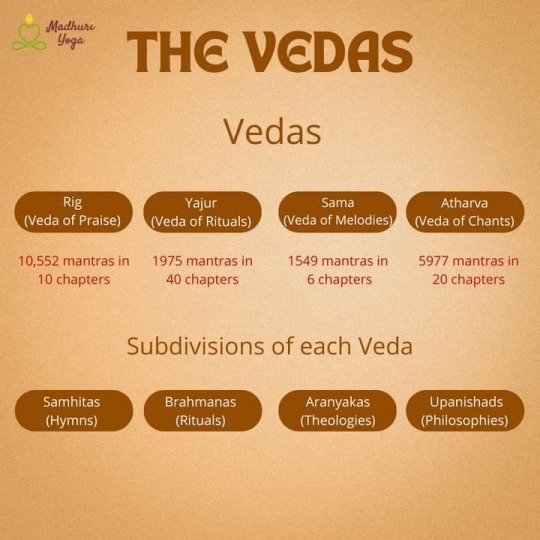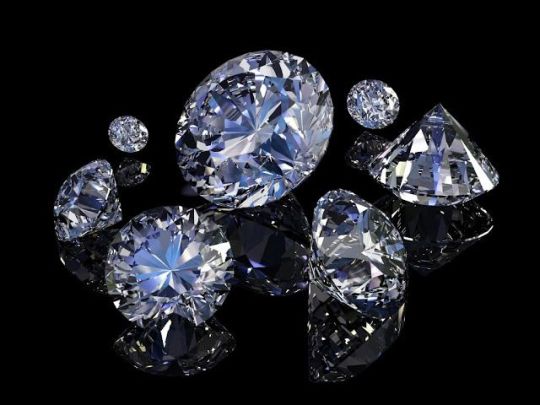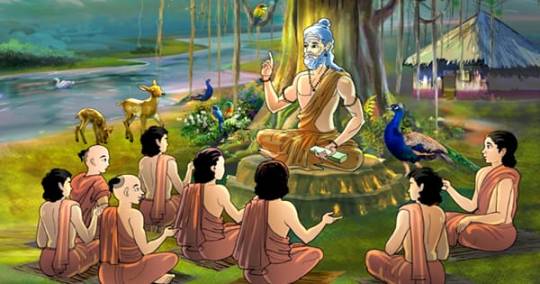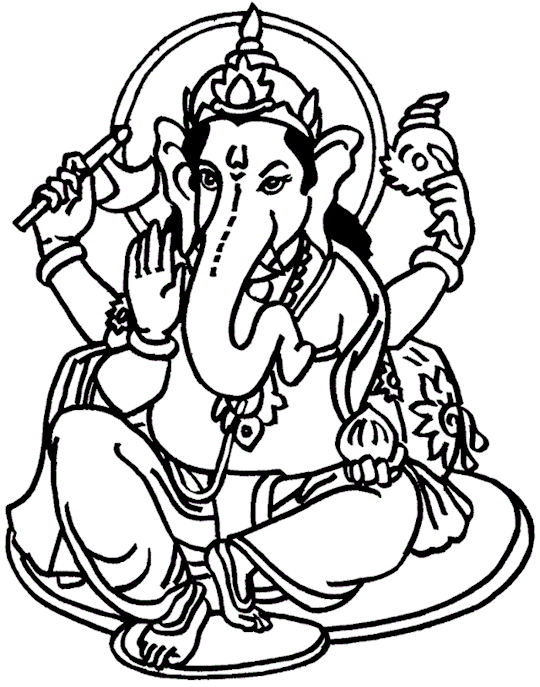#vedic literature
Text
Exploring Mars in the 12 Houses


Mars, the red planet, holds a prominent position in Vedic astrology. Known as Mangal or Kuja in Sanskrit, Mars is revered as the planet of action, energy, and vitality. Its dynamic and assertive nature imparts a fiery intensity to our lives, shaping our ambitions, desires, and endeavors.
It signifies courage, strength, and determination, urging us to rise above challenges and pursue our goals with unwavering resolve. Mars inspires us to embrace our inner warrior, empowering us to confront obstacles head-on and emerge victorious in the battlefield of life.
Mars governs various aspects of our existence, from our physical vitality and sexual prowess to our ability to assert ourselves and take decisive action. It rules over attributes like ambition, passion, and competitiveness, fueling our drive for success and achievement.
Mars, with its fiery temperament, resonates with the color red, symbolizing passion, power, and vitality. Its corresponding gemstone, the red coral, is believed to enhance Mars' positive influences and mitigate its malefic effects.
Mars is associated with the divine archetype of Kartikeya, the courageous and valorous son of Lord Shiva and Goddess Parvati. Kartikeya embodies the martial spirit and represents the triumph of righteousness over evil, serving as a potent symbol of courage, leadership, and protection.
1/ Mars in the 1st House: Mars in the 1st house embodies dynamic energy. Individuals are natural leaders, exuding confidence and assertiveness. Devotion is expressed through self-expression, taking bold initiatives, and leading with passion.
2/ Mars in the 2nd House: Mars in the 2nd house infuses vigor into financial matters. Individuals express devotion by actively managing resources, taking action to secure financial stability, and asserting themselves in matters of values and possessions.
3/ Mars in the 3rd House: Mars in the 3rd house fuels communicative prowess. Devotion is shown through assertive communication, taking initiative in relationships with siblings, and being proactive in intellectual pursuits.
4/ Mars in the 4th House: Mars in the 4th house brings dynamism to the home. Devotion is expressed through protective instincts, taking action to create a secure home environment, and passionately caring for family matters.
5/ Mars in the 5th House: Mars in the 5th house ignites creative pursuits. Devotion is shown through passionate self-expression, taking risks in artistic endeavors, and actively engaging in activities that bring joy and fulfillment.
6/ Mars in the 6th House: Mars in the 6th house channels energy into service. Devotion is expressed through taking action to help others, actively participating in routines, and asserting oneself to overcome challenges.
7/ Mars in the 7th House: Mars in the 7th house emphasizes relationship dynamics. Devotion is shown through assertiveness in partnerships, taking initiative to maintain balance, and actively working together to achieve shared goals.
8/ Mars in the 8th House: Mars in the 8th house dives into transformative experiences. Devotion is expressed through deep emotional connections, taking action to explore the mysteries of life, and facing challenges with courage.
9/ Mars in the 9th House: Mars in the 9th house fuels adventurous pursuits. Devotion is shown through taking action in spiritual exploration, passionately pursuing higher knowledge, and actively participating in philosophical discussions.
10/ Mars in the 10th House: Mars in the 10th house energizes career endeavors. Devotion is expressed through ambitious pursuits, taking bold steps in the professional realm, and asserting oneself to achieve recognition and success.
11/ Mars in the 11th House: Mars in the 11th house energizes social connections. Devotion is shown through actively participating in group activities, taking action to achieve shared objectives, and passionately supporting friends.
12/ Mars in the 12th House: Mars in the 12th house navigates spiritual realms. Devotion is expressed through inner strength, taking action in solitary pursuits, and actively engaging in practices that foster spiritual growth.
#mars#astrology#vedic astrology#sidereal astrology#sidereal#vedic#jyotish#desi#vedic astro notes#vedic astro observations#vedic chart#vedic literature#zodiac signs
156 notes
·
View notes
Text
About Vedic Scriptures



#vedic literature#hinduism#hindublr#sanatan dharma#ancient india#vedic culture#mantra#bharat#ancient indian history#puranas#sanskrit#languages#krishna#dharma#karma#hindu culture
173 notes
·
View notes
Text
I think I need to make it clear for many Vaishnav (looking especially at you, ISKON) Hindu extremists (and even many Shaivites) that ya'll can have your sects and your beliefs as Vishnu or Shiva as your supreme lords. I don't have an issue with that.
But when you try to say that this is the ONLY truth about the Vedic religion (I'm not using Hinduism here because it doesn't sum up the pantheon as much as the ''Vedic" word does, despite the term being associated with the Vedas, and yes we need to come up with a better word that comprises this entire pantheon as a whole), that's when I have a problem, because that is definitely NOT the entire pantheon.
Do not spread the beliefs of your sect as the ONLY canon belief and don't speak for the people who don't fall under this category. I have seen this in all of social media and it pains me how much of a linear pantheon this once oh-so flexible culture has become.
Yes the concept of Prajapati and the Supreme being has existed since the Vedas. But when you say that Vishnu and Shiva are somehow superior to other gods as the ONLY CANONICAL BELIEF, that just flips me off, and I'm gonna call it out.
How dare you forget the four Vedas, that had no mention of such an idea? This might tick some people off but Indra, Agni, Rudra (which later became synonymous with Shiva, but is a whole different deity), Mitra, Varuna, Vayu and a few other Gods were just as much powerful as Vishnu or Shiva, if not more. This is ANOTHER canonical truth that these extremists (again, somehow mostly Vaishnav) are denying.
Ancient pantheons weren't some linear path with just one canon event. These were their own multiverses of a plethora of VARIOUS canon events, myths and legends. So stop making the Vedic religion a linear, rigid pantheon. Remember? It's not an organized religion. There can be SEVERAL canonical truths. Like I definitely understand that a religion/culture changes overtime. It evolves. Fine. Vishnu is the supreme God now, fine. But you can't deny the history. The Vedas that didn't canonize this. Are you gonna say that these Vedas, that came BEFORE this Vishnu/Shiva being the considered the supreme lord(s), were wrong? I hope not lol.
Besides, I'm not even gonna get into ISKON. They have regarded anyone that's not Vishnu as a demigod, which is ABSOLUTELY VILE AND DISRESPECTFUL. Do they even KNOW what a demigod is??? FUCK NO. They don't. They just like to use that word to inferiorize other deities, due to their unhealthy and toxic obsession with Vishnu, who doesn't deserve it. On top of that they have claimed that worshipping such gods will not lead you to eternal peace, or that it's somehow wrong. Ah yes. Gotta love gatekeeping and toxic cult fan behavior. Call me rude but if you disrespect a GOD (yes, Indra, Mitra, Varuna and others are ALSO GODS, FYI) is WILD, and they should be called out for it. (Some Shaivites have done the same in case of Shiva, and they need to be similarly called out.)
In conclusion, worship whoever tf you want, but remember that theologically, and even historically, there can be more than one canonical story. It really depends on which sect/region you belong to. You CAN be a polytheist. Idk why Hindus these days are inadvertently trying to appeal to the monotheistic pantheons so much, to the point that they have an internal dislike for polytheism, which they're not aware of, but it shows when they speak up.
This pantheon (like every other pagan pantheon back in the day) is very broad. Remember that. And it's very flexible. So let it be like that, and stop gatekeeping it and having a war between who supreme Lord is. I'll stop my yapping here. But I hope people understand this. Cuz damn.
#Im sorry but this needed to be addressed#this whole thing has had been a pain in my ass#anyways#hindu mythology#hinduism#hindu myths#hindu gods#vishnu#shiva#desiblr#hindu#hindublr#paganblr#paganism#desi tumblr#vedic culture#vedic mythology#vedic literature#hindu religion
110 notes
·
View notes
Note
hi! i know you made a post about magha placements but can you tell me a little more about specifically magha venus? i have mine in the 8th and was curious how this would play out. thank you in advance if you choose to answer :)
Magha Nakshatra: Pitri Secrets

the magha nakshatra (early leo) is ruled by:
planet- ketu
sacred animal- male rat
body part- nose, lips and chin
deity- pitris, forefathers of humanity

it is ruled by ketu, who is the guardian of our past karmas. wherever you have magha in your chart is where the past karmas are ripe enough to be experienced in this present life.

michael jackson- sun in magha
one thing i have noticed is that magha natives can easily become very class conscious. the symbol of magha is the throne, they seek attention and can also observe who is on “the top” of the pyramid and why they belong there. it’s a way for them to gauge what behaviors will help them eventually get on the top.
magha is the type of nakshatra that isn’t accompanied alone. usually magha natives have other indicators of karma, ancestry or forefathers in their chart like: sun conjunct saturn, any planets in 10th house, rahu/ketu in significant aspects, saturn conjunction moon, the magha planet in house 4/8/10, etc.
to completely understand your magha nakshatra, you must check where it’s ruling planet (ketu) is. for example- someone with magha mercury may have their ketu in the 12th house. this could mean they get their knowledge from their forefathers in the form of dreams, intuition, etc.

eva green, magha asc
magha venus can “attract” their ancestry very easily. venus is utter fulfillment and contentment in astrology, hence why you can attract easily using your venus. seeing that your venus is in the 8th house, you may uncover ancestral secrets or gain money through the property/riches of your forefathers. doing any sort of ancestral prayer/acknowledgement will help you understand intimacy and gain shared wealth.
magha mars may have a lot of karmic work to do regarding anger, drive and power. especially if it is conjunction/square saturn or sun. these are very fatherly, masculine planets. it can show wrongdoing of the ancestors on their male part, so now it’s someone’s time to change the tide.
generally, whatever house your magha is in- if you are facing difficulties in it, honoring your ancestors will help you.

uma thurman, magha asc

helena bonham carter, magha moon
How to Honor your Ancestors:
in general, any sort of acknowledgment to the ancestors can work.
in mahabharata, karna’s soul transcended to heaven where he was offered gold and jewels as food. he asked indra, the lord of heaven, the reason for serving gold as food.
karna had never donated food to his ancestors in shradha, since he was unaware of his ancestry. to make amends, he was given the opportunity to return to earth so that he can perform shraddha and donate food and water in their memory. this period is known as pitru paksha (fortnight of paternal ancestors).
amavasya (new moon) is a great time for magha natives as well.
doing shadow work related to your paternal ancestry / generational trauma helps you connect with yourself
reading about your genealogy, finding more about your ancestry
meditating, making art inspired from your ancestors, etc.
#astro#astro community#astro notes#astro observations#astrology#zodiac#zodiac signs#astrology notes#astrology observations#aries moon#leo moon#leo venus#leo mars#vedic mythology#vedic literature#vedic astro observations#vedic astrology#vedic astro notes#magha nakshatra#astroblr#astroloji#astro placements#vedic chart#vedic texts#ancestry#forefathers#leo mercury#vedic culture#hindu vedic#leo sun
232 notes
·
View notes
Text
When Lord Ram asked Hanuman:
“Little monkey, who are you?”
Hanuman answered:
“When I forget who I am, I serve you; when I remember who I am, I AM you.”

70 notes
·
View notes
Text
Symbol of Ardra Nakshatra ( 6°40′ to 20°00′ Gemini): Raindrops, Teardrops, Storm, A human head & Diamond




a storm : dangerous and destructive side of mother nature but at the same time storms act as natural cooling systems of this planet, through lightning it create more ozone, bring rain to the areas where it was much needed, replenish the underground water. Deity of this Nakshatra is Rudra, the god of storm. Rudra & his female counterpart Rudrani were born when Brahma became extremely frustrated with creating beings to populate this universe. Similar to the storm, Rudra & his offspring were fiery, destructive, angry, dangerous, howling. Ardra signifies the frustration that creativity brings ,shows us the things that we have to overcome before we are able to create what we desire. Just like the storm, it represents the need for destruction, importance of rest, starting with a clean slate, forgetting & letting go, discarding things do not serve us anymore. It reminds us that creation & destruction go hand in hand and they both need each other. Anger and destruction also serve a purpose.
Teardrops cleanse our pent up emotions & grief like raindrops replenish nature. Additionally it symbolizes the source of all sorrow, sadness & grief.
Diamond shows their strong determination & brilliance
Ardra is also represented by a human head ( Brahma's 5th head ) which symbolizes ego, arrogance, lust.
#astrology#gemini#vedic culture#vedic astrology#vedic astro notes#vedic literature#astro notes#astrology observations#sidereal astrology#astro observations#vedic astro observations#sidereal chart#air signs#sidereal zodiac#nakshatras
138 notes
·
View notes
Text
🪐🌞🌝 KARAKAS IN VEDIC ASTROLOGY 🌝🌞🪐
Chara karaka
Atmakaraka: A planet with the highest degree of Longitude is called Atmakaraka. It Represents Desire of Heart and Soul.
Amatya karaka: The planet with the Next Higher Degree Is Called Amatya Karaka. AK is Called 'King' than Amatya karaka is know as 'King's Advisor'.
Bhratru Karaka: Significator of Relationship you have with Sibling.
Matru Karaka: Signifies the Relationship you have with Mother.
Putra karaka: Signifies the Relationship you have with Children.
Gnati karaka: Signifies the Relationship you have with your Opponents.
Dara karaka: Signifies Relationship you have with your Spouse.
See in your D1 Chart which Planet Holds the Highest Degree ( Atmakaraka planet) Now Check its position in the Navamsa Chart D-9. It Signifies Your Thought Process and Mindset Generally In Life and Marriage.
See in your D1 Chart which Planet Holds 2nd Highest Degree ( Amatya karaka). Check its Position in the D9 Chart. It is Responsible for the Execution Of Your Thought Process.
If The Atmakaraka and Amatya karaka Planets are placed Together in the D9 chart, A Raj Yoga is Formed.
🌟⭐🌟⭐🌟⭐🌟⭐🌟⭐🌟⭐🌟⭐🌟⭐🌟⭐🌟
🌀Yoga karaka Planets For Every Ascendant In Vedic Astrology🌀
'Planet which Gives Good Result'.
Aries Ascendant ♈: Planet Sun.
Taurus Ascendant ♉: Planet Saturn.
Gemini Ascendant ♊: Planet Venus.
Cancer Ascendant ♋: Planet Mars.
Leo Ascendant ♌: Planet Mars.
Virgo Ascendant ♍: Planet Venus.
Libra Ascendant ♎: Planet Saturn.
Scorpio Ascendant ♏: Planet Moon.
Sagittarius Ascendant ♐: Planet Sun.
Capricorn Ascendant ♑: Planet Venus.
Aquarius Ascendant ♒: Planet Venus.
Pisces Ascendant ♓: Planet Moon.
🎐🍀🎐🍀🎐🍀🎐🍀🎐🍀🎐🍀🎐🍀🎐🍀🎐🍀
I am not professional still learning Vedic Astrology 🙏
Thank you so much for love and support 🤍🧚♀️
117 notes
·
View notes
Text
Rahu and Ketu's malefic influence thrives in your ignorance. That's why they enemies to the sun and moon. The luminaries expose them.
#astro notes#astrology#astrologer#astro observations#astrology community#vedicknowledge#vedic literature#vedic chart#vedic astrology#ketu#the luminaries
59 notes
·
View notes
Text
What should we prefer, Vedic astrology or Western astrology?
Astrology is used for helping human from suffering through the practice of religious rituals. You can get over your grief with the help of science and art. Vedic astrology and Western astrology are the two main subtypes of astrology. They not only have diverse origins, but they also have some additional differences. However, the major goals of astrology, whether it be Vedic or Western, are to reduce troubles and improve happiness. Here, we'll outline some key distinctions between Vedic and Western astrology. After realising and comprehending this, you cannot help but praise these two astrology systems.
What is the difference between the best Western astrology?
People can solve all of their difficulties and learn about the future through astrology. The Veda Puranas also cover astrology. It is believed that astrology is a tool that guides us from darkness to light, yet its application is rather broad. In astrology, there is also Vedic or Western astrology.
The Sun sign is the foundation of western astrology, whereas the Moon sign is used in Vedic astrology. This entire system of astrology revolves around these two. Let us first explain that astrology is a discipline and that Vedic astrology and resultant astrology are similar to it before describing the differences between the two. Numerous distinct astrology techniques are still used today.
What is Vedic Astrology
The Sanskrit word for Vedic astrology, or Hindu astrology, is jyotiṣa, loosely translating to "light/heavenly body," and the modality seems to have first appeared in the Rigveda, an ancient Indian text (though some assert it's been around since 10,000 B.C.).
It is believed that this is one area of astrology that evolved throughout the Vedic era while discussing Vedic astrology. This time period has seen the greatest advancements in human civilisation, particularly in the Indian subcontinent. It is believed that astrology must have been written at the same time. The study of the zodiac signs, constellations, and the planets—Sun, Moon, Mars, and Mercury—determines the calculation's sequence. Vedic astrology divides the sky into 12 zodiacs and 27 constellations, assuming a 360-degree sphere. It is also known as Hindu astrology.
Western astrology: what is it?
The contemporary forms of astrology are referred to as western astrology. In which the beneficial and detrimental impacts of planets and stars on people and the earth are researched. The probabilities of upcoming events are presented based on the calculations of these planets and constellations. We are all aware that astrologers are employed for a variety of astrological objectives. Since astrology is used to predict results, it is also known as fruitful astrology.
There are some key distinctions between Vedic and Western astrology.
As we previously stated, because western astrology is based on the movements of the Sun, it gives a greater importance to a person's psychology, personality, and character. But when it comes to Vedic astrology, all facets of life are taken into account in its moon-based calculation approach. Because of this, it is stated that one can learn about a person's history, present, and future by providing correct and thorough information about their birth. The concepts of karma and destiny are also kept in mind.
Who has the best astrology, both Vedic and Western?
The Vedas and Puranas address vedic astrology. Vedic astrology emphasises the Panchag when discussing the basis of its computation, but the sign approach is more common in western astrology. Western astrology can only provide a direct explanation of potential events, however Vedic astrology is exceedingly accurate and effective.
Indian astrologers believe that Vedic astrology is the greatest since it combines ancient wisdom with some inherent complexity. But it's also true that both of these approaches to astrology can be used to make accurate predictions about the future. Both of these astrologies help people solve their difficulties and live happier lives.
Both texts are from distinct traditions.
Vedic astrology, as its name suggests, has its roots in the mythical Vedas. In the six main categories of the Vedas—education, Kalpa, grammar, nirukta, astrology, and verses—it is the most significant text. The Vedas' eye is represented here. India's ancient sages created Vedic astrology thousands of years ago. Vedic astrology is hence revered and old. God is said to have revealed his heavenly knowledge to wise people in the past. Vedic astrology uses a different calendar. Vedic astrology has a different approach to retrogrades, sun signs, and rising signs. Vedic astrology speaks more to your karma and dharma. "Vedic astrology utilizes special aspects—each planet has a specific aspect or set of aspects, along with different strengths that are applied to that specific aspect."
Western astrology, on the other hand, can be considered as an advancement of the way of life and thought in ancient Greece. The Egyptian culture has also had an influence on western astrology. So it may be claimed that the development of intellectualism and the discovery of the European mind led to the development of Western astrology. All planets in Western astrology share the same type of aspect, such as a square, trine, sextile, or opposition, Another interesting distinction is that modern Western astrology has become more psychologically oriented. Western astrology bases charts on the "tropical calendar" (which most of the world uses) and the four seasons, while Vedic astrology charts are calculated using something called the sidereal system, which looks at the changing, observable constellations. (Western astrology does not change in the same way and works with the planets' fixed positions.)
Different methods of calculation
According to the Vedic astrological system, a particular zodiac is depicted with a fixed constellation in the background. The "Narayan Zodiac" is another name for this.
Western astrology utilises a changing zodiac. The system is founded on how the Earth faces the Sun. "Cyan zodiac" is another name for it.
In this approach, Sayan astrology is common in Western nations while Vedic astrology emphasises the Panchag based on Narayan astrology.
The number of planets and the function of fixed stars are different
Vedic astrology recognises nine planets in total: the Sun, Moon, Mars, Mercury, Jupiter, Venus, Saturn, and the Moon's two nodes, Rahu and Ketu. Additionally, Vedic astrology uses 27 lunar constellations known as nakshatras in addition to the 12 zodiac signs. These constellations each last 13 degrees and 20 minutes.
Uranus, Neptune, and Pluto are used in Western astrology to energise the future. In Vedic astrology, these planets are not given significant weight. Moreover, constellations are not regarded as performing in Western astrology.
disparity in time
The Vimoshottari Dasha system, which determines the duration of recurrence of planets, is used in Vedic astrology to predict future occurrences and examine planetary motion. While the Dasha method is not utilised in Western astrology. On the other side, it researches planet motion to understand planet action.
focus on several aspects
Western astrology places more emphasis on the Sun's motions. As a result, the psychology, personality, and character of the individual are given more weight. The Vedic or Nakshatra-based Nirayana method, on the other hand, is a moon-based astrological system that takes into account all facets of life. To know about the past, present, and future of a specific time period, it is simple to provide a precise description of the birth of any person, i.e., knowledge of the time, place, and time of birth. The concepts of karma and destiny are also kept in mind. In other words, your horoscope contains all of the events of your life. You can use Indian astrology to give your aims, wishes, and objectives the proper direction, which will make your life successful and pleasurable.
Vedic astrology's superiority as a science
Western astrology uses the sun zodiac while Vedic astrology uses the moon zodiac. The nakshatras, dasha system, and divisional charts of Vedic astrology offer incredibly deep insights. The Western horoscope, sometimes known as the "cyan method," can only directly explain potential events. Vedic astrology, on the other hand, is extremely precise and effective. The complexity of this ancient wisdom itself is also present.
It should come as no surprise that the energy of the planets or constellations orbiting the earth has an impact on each of our daily actions. This makes it possible to successfully include both sorts of astrology's predictions into the narrative. Without a doubt, both astrological texts illuminate the way for people to advance by lighting a flame of hope in the depths of adversity and supporting them in creating a happy existence.
#astrology#vedic astrology#vastu shastra expert#astro notes#aries astrology#astro observations#predictive astrology#vedic astro observations#astro posts#astro placements#astro predictions#astro#planets#Vedic Jyotish Online#astrology numerology vedicastrology#vedic astro notes#astrology numerology vedicastrology#vedi#vedic literature#hindu mythology#hindu astrology#hindu vedic#hindu vedas#vedas
27 notes
·
View notes
Text
QUIZ
#pick a picture#pick a pile#pick an image#pick a card reading#pac reading#pick a photo#pac tarot#free tarot#pick a card#astrology#18+ astrology#western#vedic astrology#vedic astro notes#vedic literature#vedic astro observations#chinese astrology#tropical astrology
16 notes
·
View notes
Text
"Where there is respect for woman, there will be the presence of the Divine" - the Vedas
2 notes
·
View notes
Text
Ramayan in one picture 🚩

#ramayan#hindublr#hinduism#jai shree ram#sita ram#hanuman ji#ayodhya#ravana#sanskrit#vedic literature#valmiki ramayan
101 notes
·
View notes
Text
#desiblr How about we created a similar website like theoi.com, but for Hindu mythology? People will get to know more about this pantheon then.
#desiblr#hindublr#hindu mythology#desi tumblr#mythology#theoi#hinduism#desi tag#desiposting#hindu gods#hindu myths#hindu#vedic literature#vedic culture
39 notes
·
View notes
Text
VEDIC CULTURE IN INDIA:

Vedic culture is a term used to refer to the ancient religious and social traditions that originated in the Indian subcontinent and are based on the Vedas, which are a collection of sacred texts of Hinduism. The Vedic period in India is believed to have started around 1500 BCE and continued until around 500 BCE.
The Vedic culture is characterized by its emphasis on ritualism and sacrifice, with a complex pantheon of gods and goddesses that were worshipped through fire rituals, offerings, and prayers. The Vedas also contain hymns, philosophical reflections, and discussions on various aspects of life, such as ethics, morality, and social organization.
The Vedic culture also gave rise to the caste system, which divided society into four main classes or varnas: Brahmins (priests and scholars), Kshatriyas (warriors and rulers), Vaishyas (merchants and farmers), and Shudras (laborers and servants). The caste system was based on the belief in karma, which holds that one's actions in this life determine one's status in the next.
Despite the changes that have taken place in India over the centuries, many aspects of Vedic culture continue to influence Indian society and religion. The Vedas and their teachings continue to be studied and revered by many Hindus, and Vedic rituals and ceremonies continue to be performed in temples and homes throughout the country.

There are several benefits of Vedic culture, some of which are:
Spiritual Growth: Vedic culture focuses on spiritual growth and encourages individuals to connect with their inner selves. It teaches the importance of self-realization, meditation, and self-discipline, which helps individuals attain peace, happiness, and contentment.
Holistic Healing: Vedic culture emphasizes the importance of holistic healing, which involves treating the mind, body, and soul together. This helps individuals achieve a state of balance and harmony, leading to better health and well-being.
Respect for Nature: Vedic culture teaches us to respect and honor nature. It emphasizes the interconnectedness of all living beings and the environment, which encourages us to live in harmony with nature and be mindful of our impact on the planet.
Cultural Diversity: Vedic culture celebrates cultural diversity and teaches us to respect and embrace different cultures and traditions. This helps to promote tolerance, understanding, and harmony in society.
Social Order: Vedic culture provides a social order through the caste system, which divides society into different classes based on their occupation and social status. This provides a sense of order and stability in society, allowing people to fulfill their roles and responsibilities effectively.
Ethics and Morality: Vedic culture promotes ethical and moral values, such as truth, honesty, compassion, and non-violence. These values help individuals lead a virtuous and fulfilling life, and contribute to the greater good of society.
It is important to note that while Vedic culture has many benefits, it also has some drawbacks. Some of these include:
Caste System: The caste system, which is a fundamental aspect of Vedic culture, has been criticized for its rigid social hierarchy, discrimination, and inequality. The caste system has been used to justify social and economic inequality, and has resulted in the marginalization of certain groups of people.
Patriarchy: Vedic culture is often criticized for its patriarchal values and gender inequality. Women were traditionally expected to be subservient to men and were denied certain rights and opportunities.
Superstition and Dogma: Vedic culture has also been criticized for its emphasis on superstition and dogma, which can be limiting and prevent individuals from questioning established beliefs and traditions.
Animal Sacrifice: Some Vedic rituals involve the sacrifice of animals, which has been criticized for its cruelty and inhumane treatment of animals.
Lack of Social and Religious Diversity: Vedic culture can be criticized for its lack of social and religious diversity, which can lead to intolerance and a lack of understanding of different cultures and beliefs.
It is important to acknowledge both the benefits and drawbacks of Vedic culture and to work towards addressing its shortcomings while preserving its positive aspects.

BUY NOW :
COSMIC ENERGY COURSE[click below the link]
CLICK HERE
11 notes
·
View notes
Text
If you dont have certain placements in your chart you can get a little taste of it when it transits in one of your houses.
like 12th house jupiter shows an expansion on your spiritual practice, maybe taking in new beliefs that fit your journey, reading more and gaining more knowledge, connecting to your innerself/subconscious more often.
taking up more classes
divine experiences showing up
fortunate experiences being optimistic
'luck' will come based off your belief system.
#jupiter in the 12th#saturn#venus#mars#jupiter#leo#pluto#aries#sun#moon#cancer#neptune#pisces#astro observations#astrology theories#astrology thoughts#astrology#astro thoughts#vedic literature#sidereal atrology#astro#333
10 notes
·
View notes
Text
Symbol of Punarvasu Nakshatra (20°20' Gemini to 3°20' Cancer) : A fractal , A bow & a quiver of arrows, A resting place/home


"punar" means again, "vasu" means light
'again light' after the storms of Ardra
A fractal is a never ending, complex repeating pattern where the process repeats itself within it. Similarly, Deity of this nakshatra is Aditi, who had many rebirths like a fractal appearing many times in the pattern ; she was the mother of her own father, first she helped in the creation of his father Daksha and then incarnated & took her form as his daughter- symbolizing endless cyclic rebirth of the divine essence.


Traditionally, Punarvasu symbol is a bow and a quiver with arrows. Quiver with arrows symbolize the untapped, unreleased, stored potential of the natives, like those quiver with arrows the natives of this nakshatras has limitless resources. The bow symbolizes the desire and drive for moving forward. Arrows stored in this quiver aren't ordinary arrows, they are divine weapon that have the quality to come back to it's shooter after fulfilling it's job, which symbolizes cyclical, repeating nature of this nakshatra. The natives can bounce back again and again after periods of difficulty like those arrows.
A house or resting place symbolizes destination, a place where we can rest & find peace; spiritually, it shows the reincarnation of a soul to search for it's home--a physical body so that it can attain greater consciousness through various experiences in this material realm. After experiencing the high & lows, stormy nature of the previous Nakshatra Ardra, now you have a place to rest
───── ⋆⋅☆⋅⋆ ────────── ⋆⋅☆⋅⋆ ────────── ⋆⋅☆⋅⋆ ─────
#astrology#vedic astrology#astro notes#sidereal astrology#astro observations#astro community#natal chart#birth chart#astro posts#vedic astro notes#vedic culture#vedic astro observations#vedic literature#nakshatras#gemini#cancer#astrology observations#astrology placements#air signs#water signs#astrology memes
104 notes
·
View notes